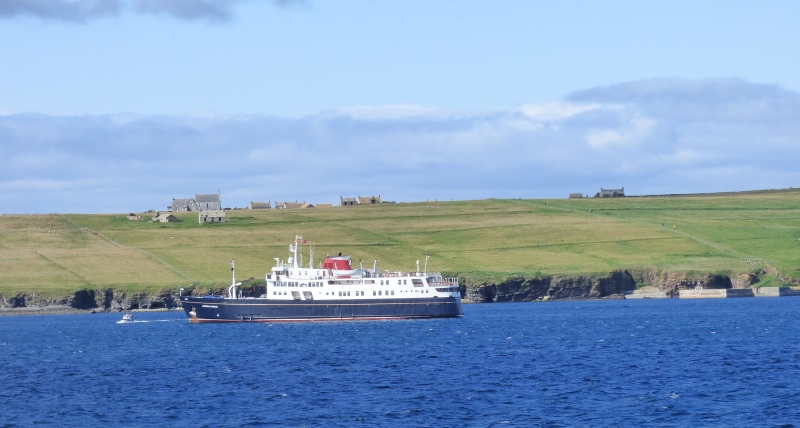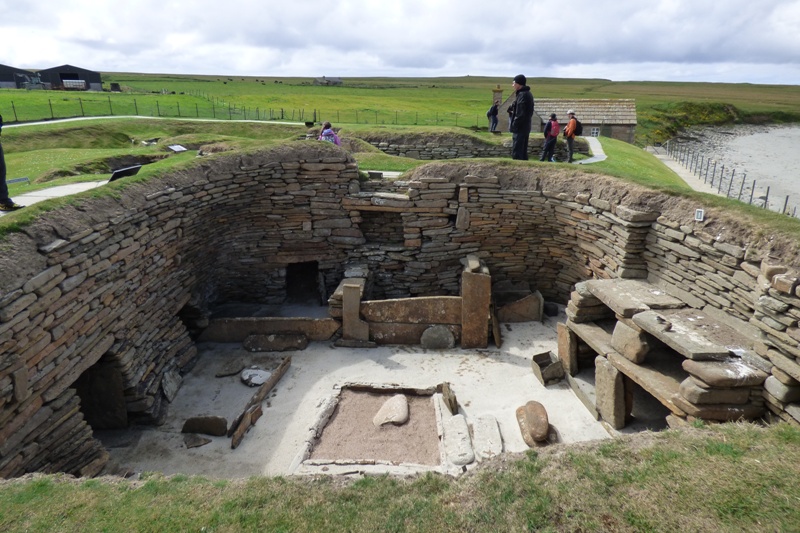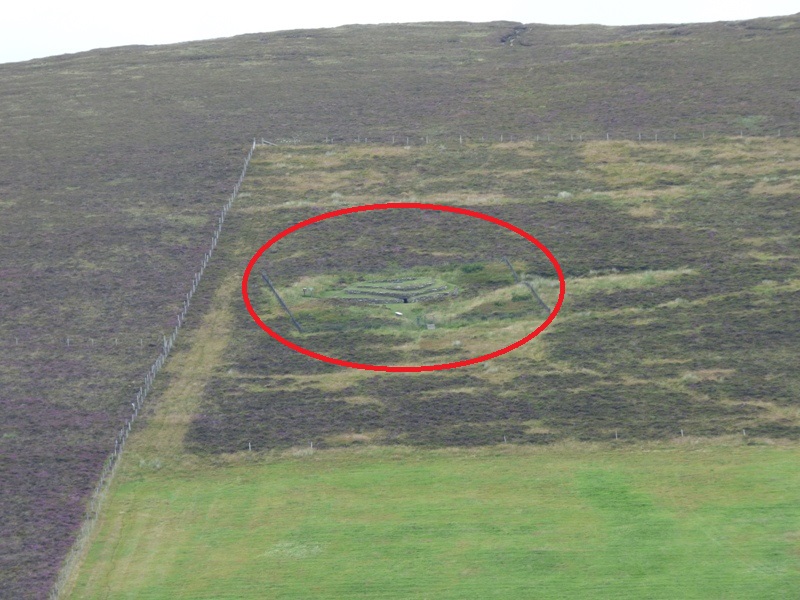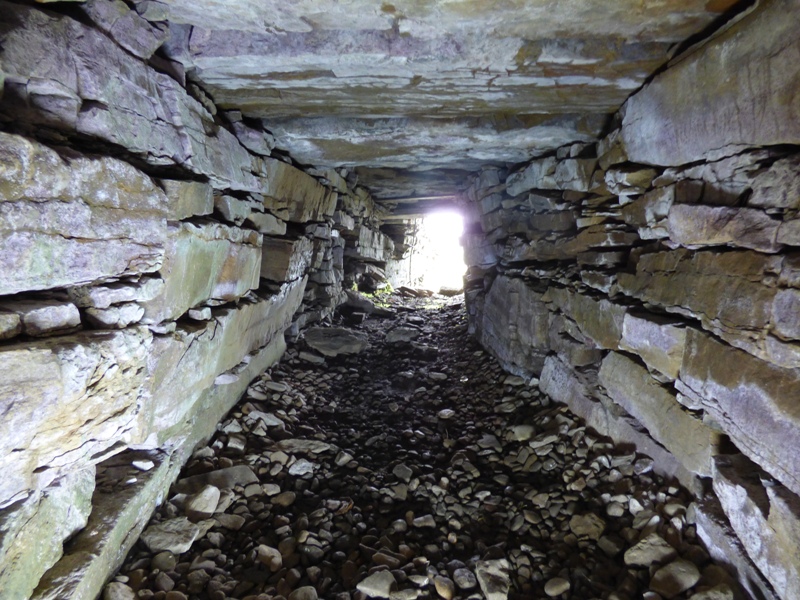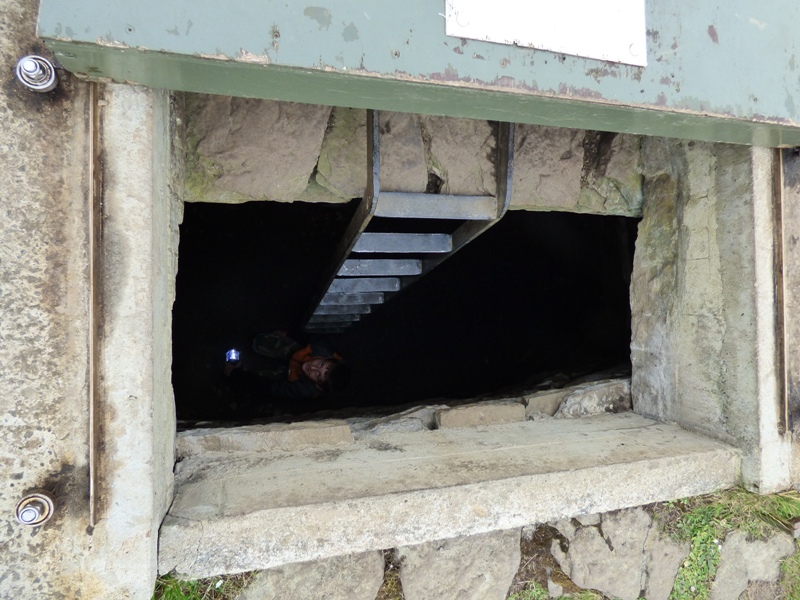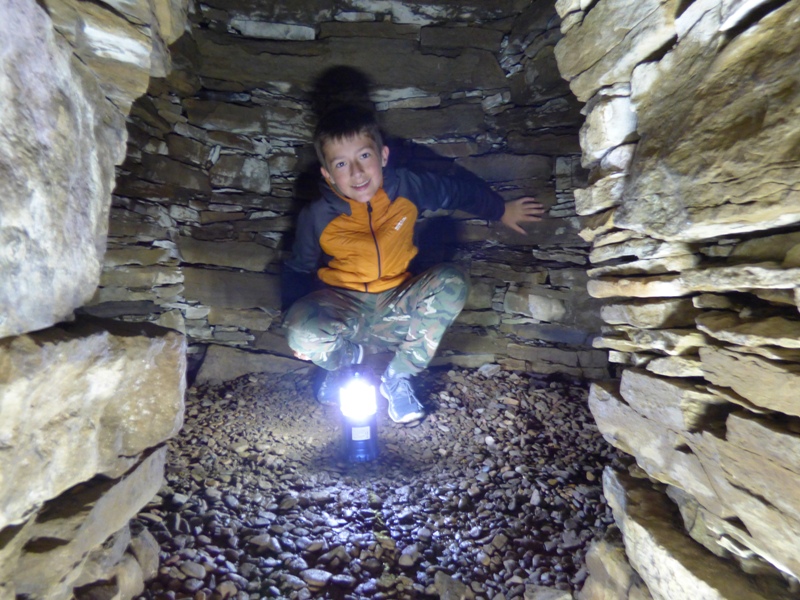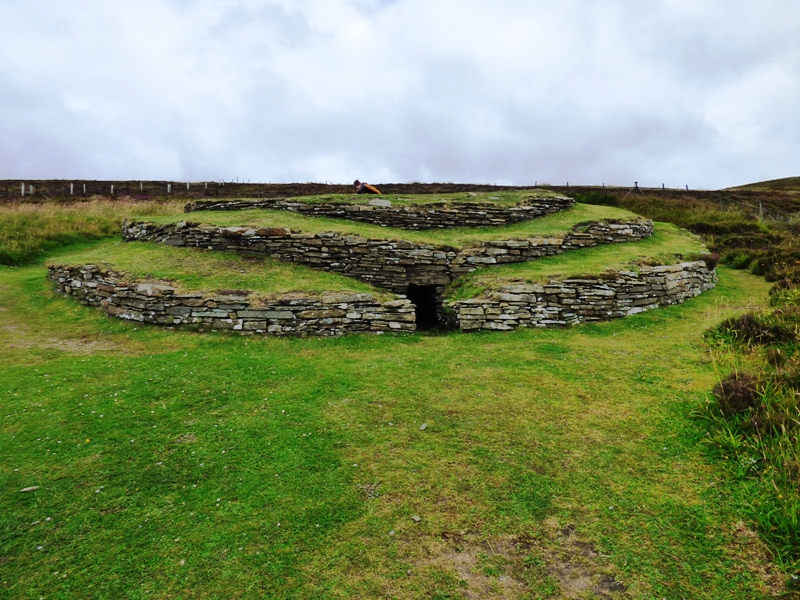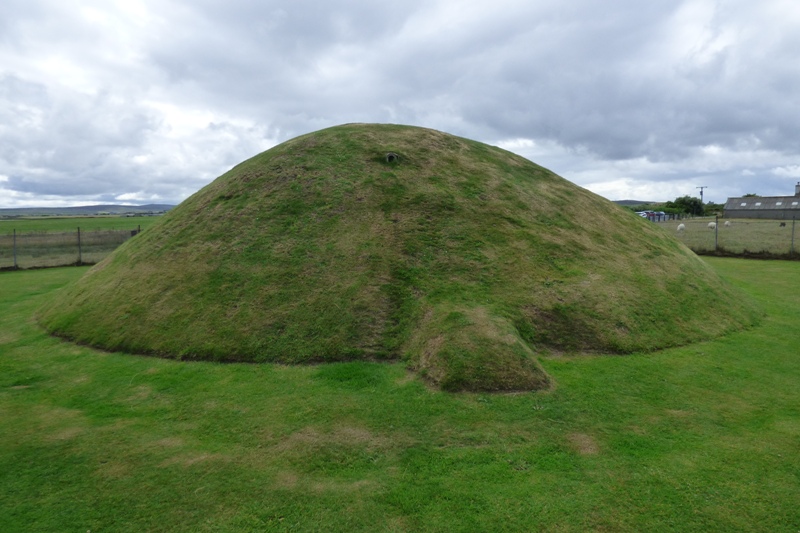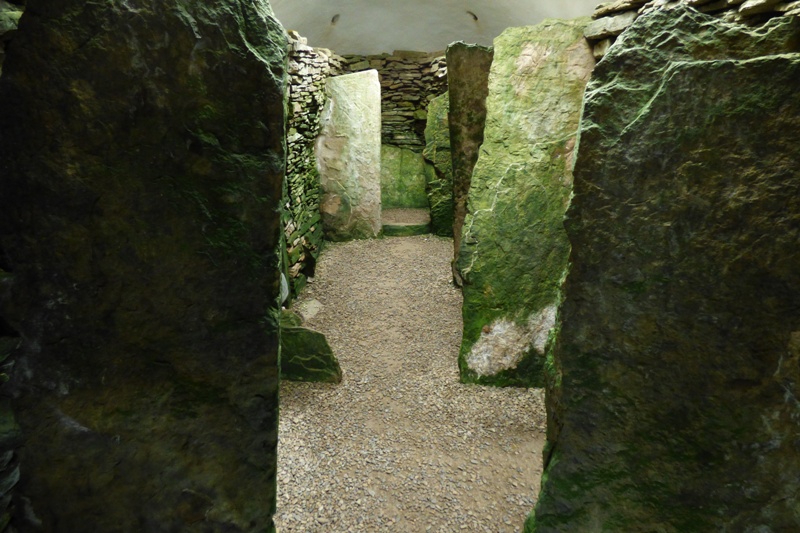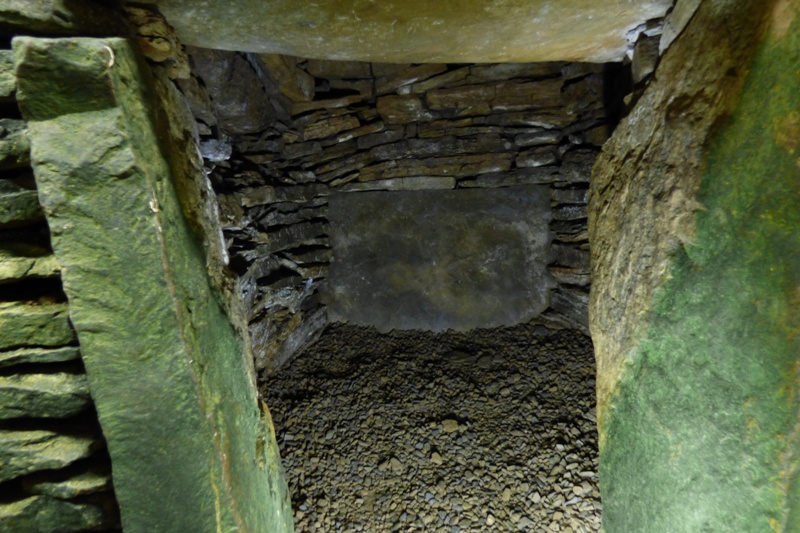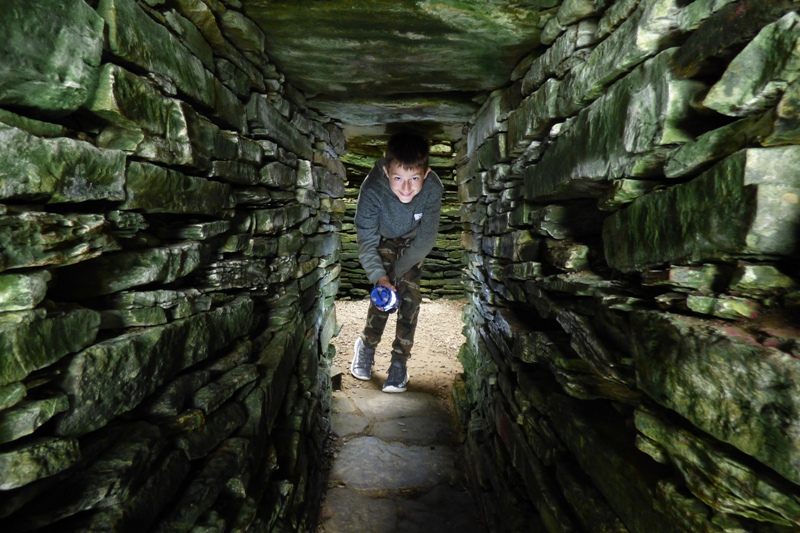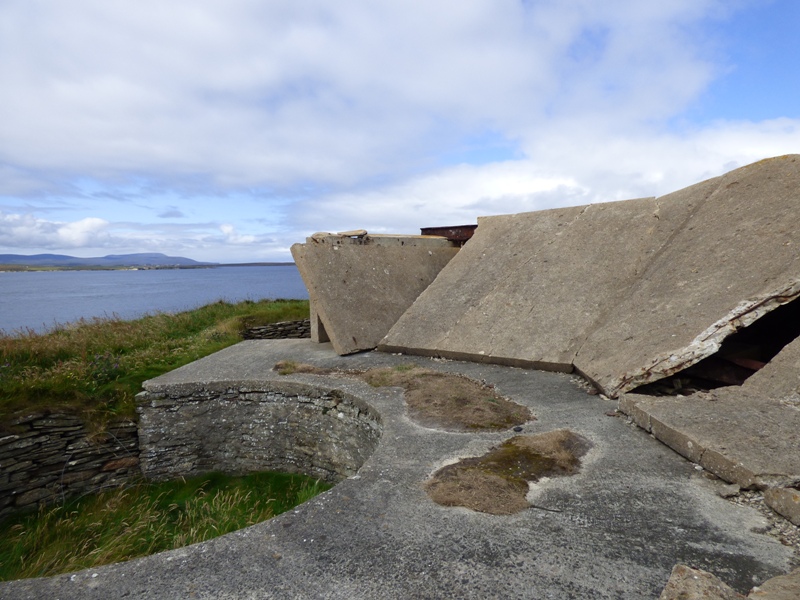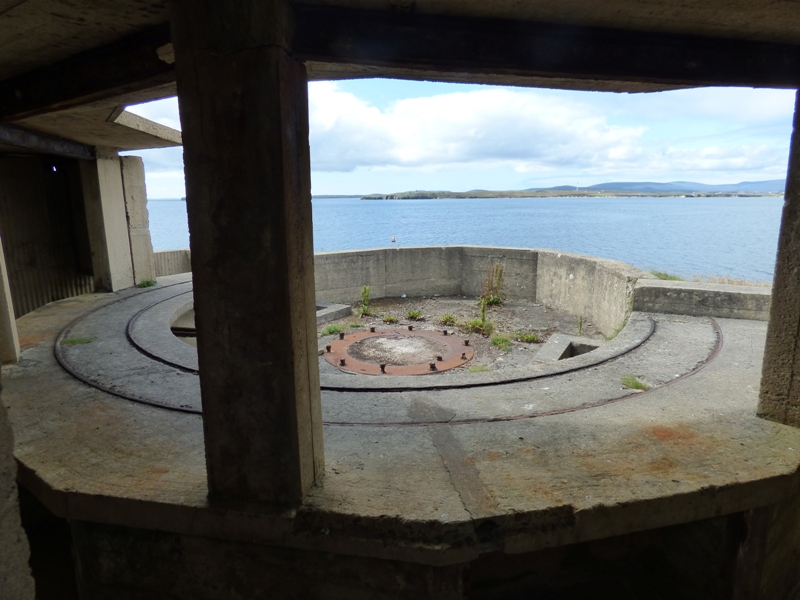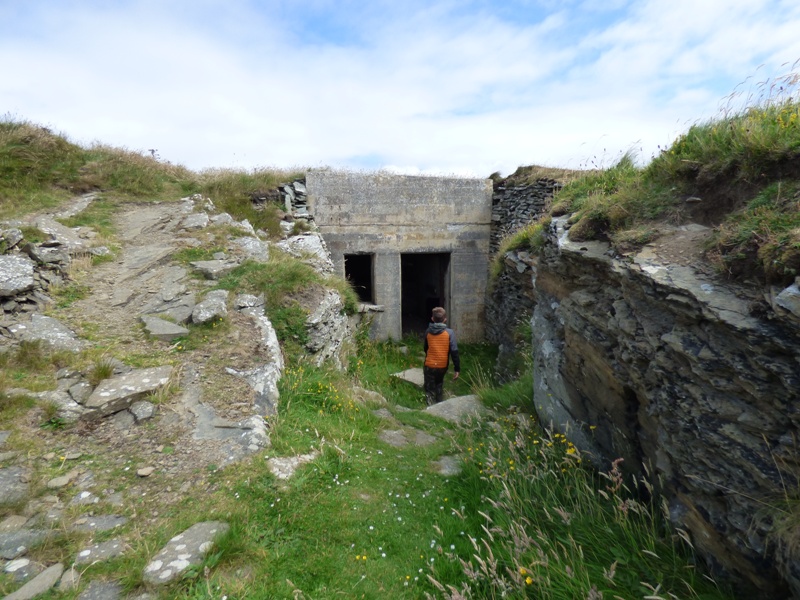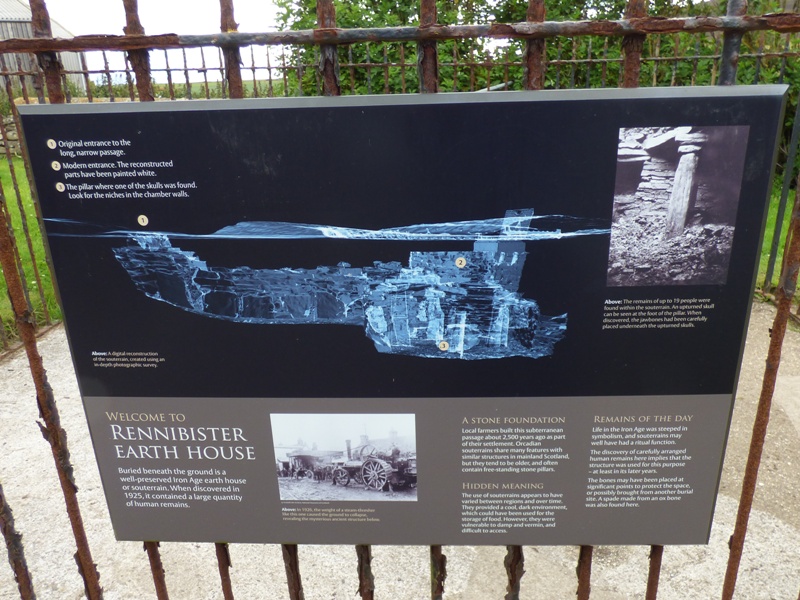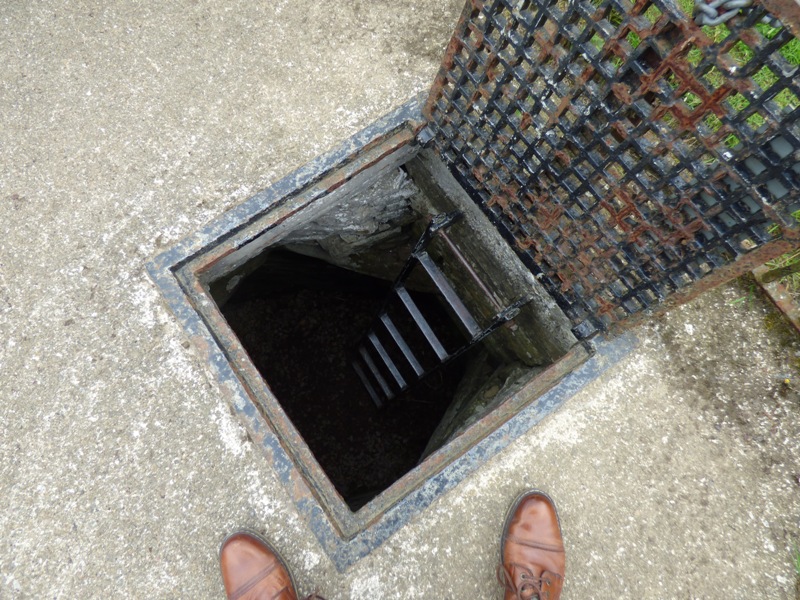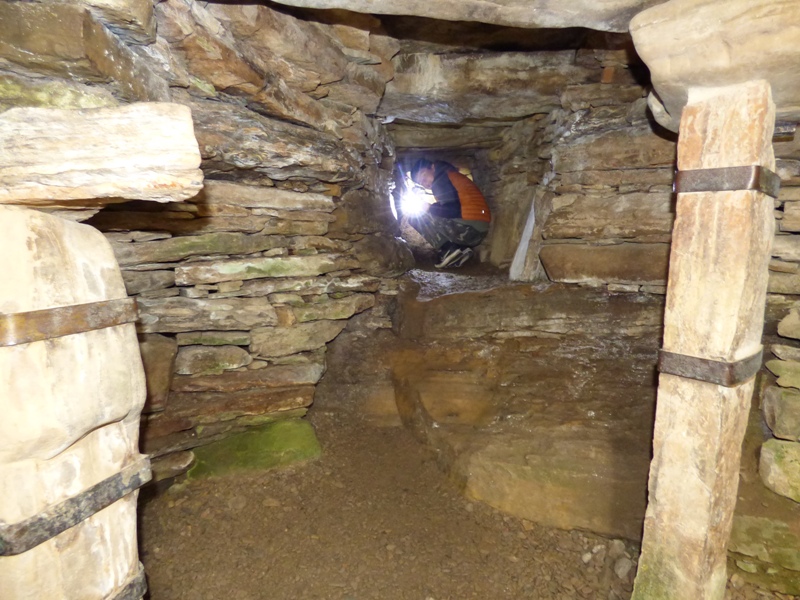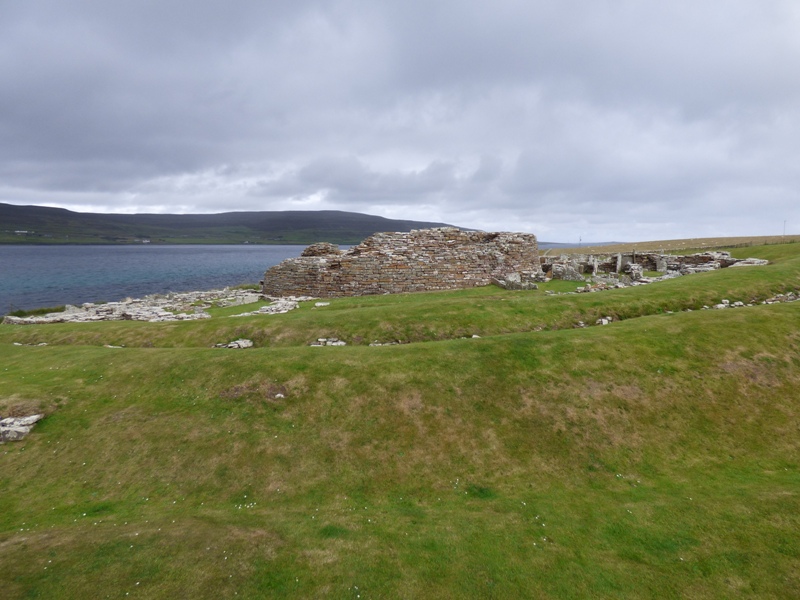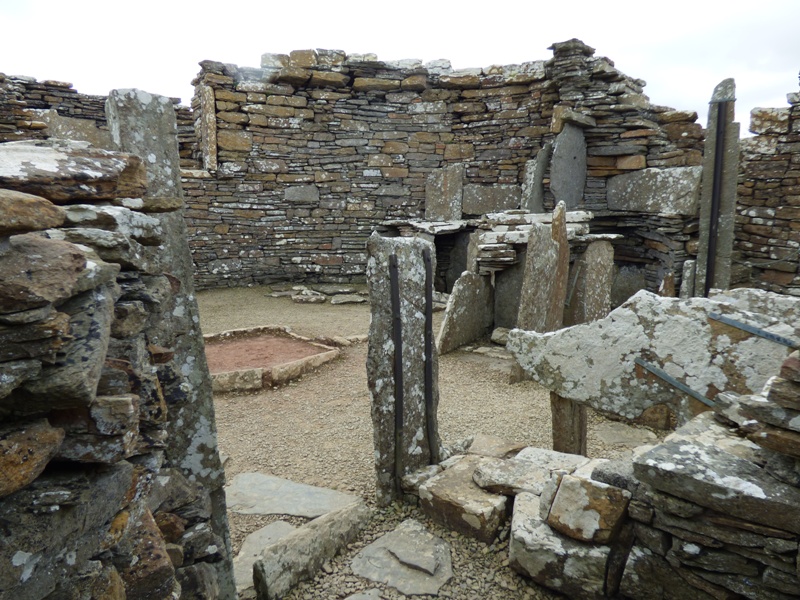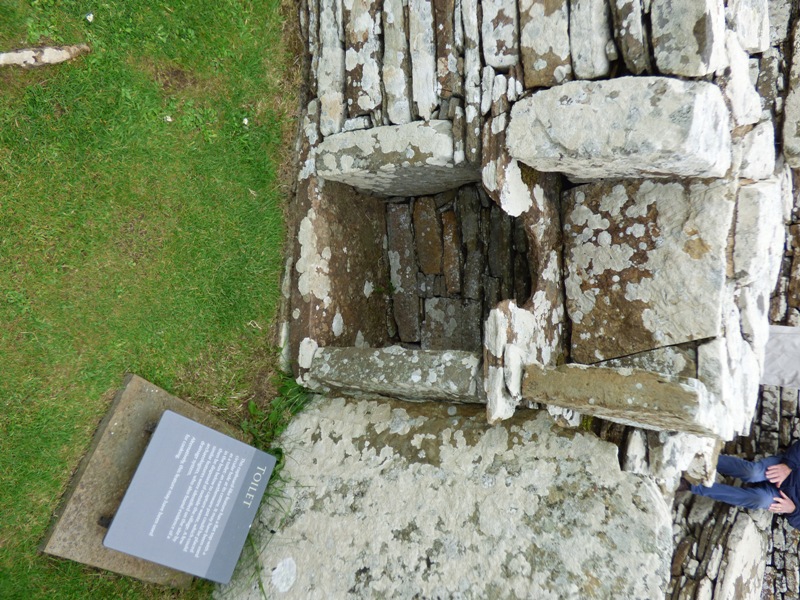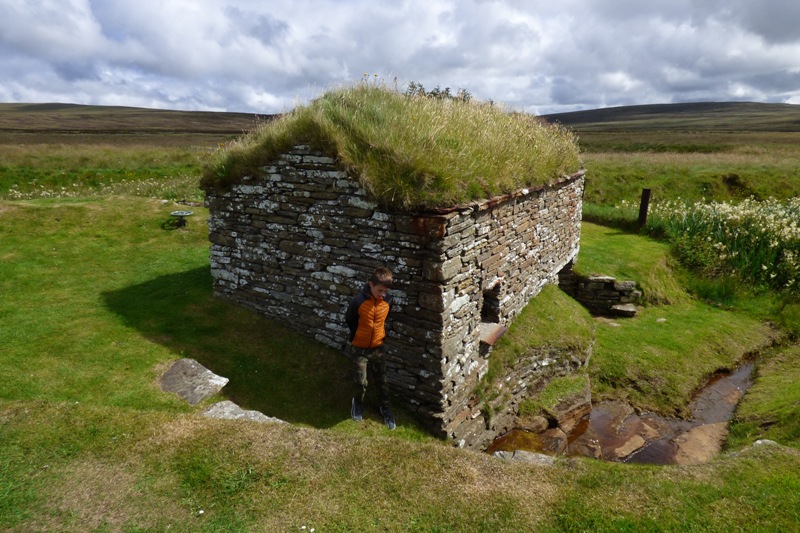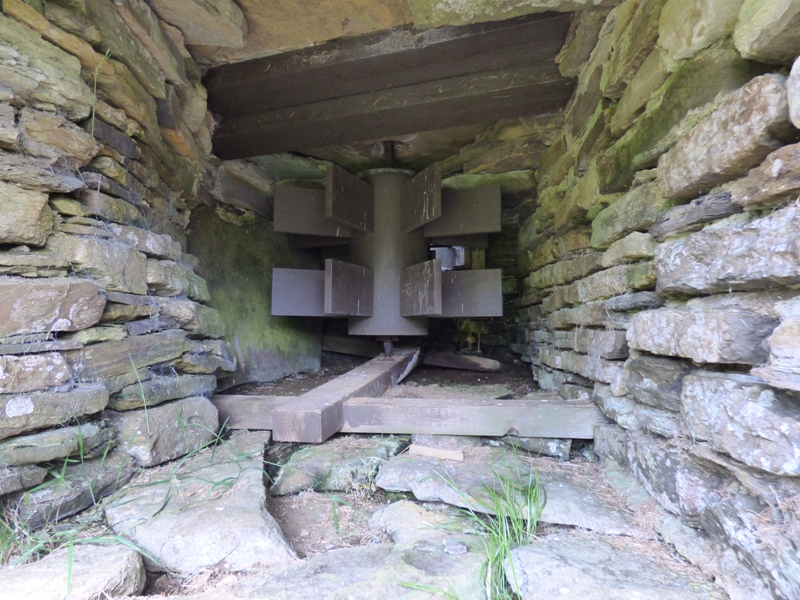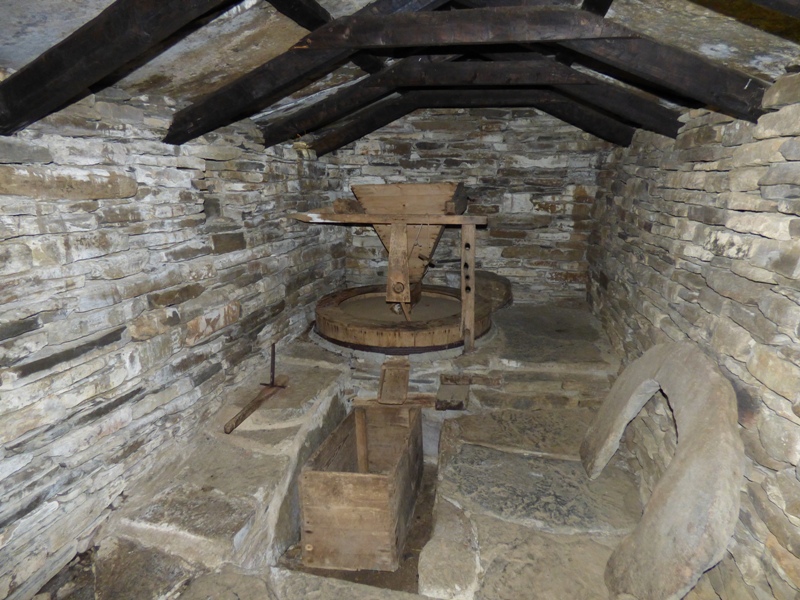Scotland Travel Blog July 2023
”Orkney’s Other Attractions”
The newspapers in Scotland have recently been carrying reports about issues on Orkney resulting from the islands' growing popularity as a destination for cruise ships. It seems that some of the islanders are unhappy about the large influx of tourists swamping the island each time a cruise ship docks in Kirkwall.
I’m always a bit skeptical about newspaper reports, so decided it was time we returned to spend a week on Orkney to see what the situation is really like. And I wanted to explore some of the less obvious attractions, so we could recommend alternatives that wouldn’t be crowded.
I’ve previously written a Blog about the “Best things to do in Orkney”, and in that article, I covered the more obvious mainstream tourist activities, as well as a few lesser-known spots. In this Blog, I plan to focus on places that are all on the Orkney Mainland, but below the mainstream tourist radar.
Before I move on to that, let me tell you a bit about the Cruise ships and things you need to consider when planning your visit to Orkney.
During our week on Orkney, nine large cruise ships (they could swallow the one pictured above) arrived in Kirkwall bringing a total of 19K passengers. You can check the schedule of visiting cruise ships by going to the Orkney Harbour Authorities website.
The cruise ships typically only stay for 1 day so they take their passengers to the main tourist attractions of Skara Brae, Ring of Brodgar, and Kirkwall. The only place where we had issues with the crowds was at Skara Brae, so it is recommended that you book your visiting time at this attraction before you go. Fortunately, we did do this as we arrived at the same time as 4 coach loads of visitors, and the staff were turning away people who didn’t have tickets booked.
Kirkwall town centre does get busy when the cruise ships are visiting, but we didn’t find this to be a problem. It was good to see the town looking so active and affluent. The shops in Kirkwall certainly seemed to be posher than we remembered from our previous visits, so the extra tourist income is benefiting the local economy.
Chatting with the locals, we got the impression that most people were generally welcoming of the extra tourists. So don’t believe everything you read in the papers.
Orkney’s Best Quiet Spots
When we do research for our travel guides, we typically base ourselves in a region of Scotland for 7 days, so we can really learn about the place. We also go back to each area several times and try to find new things to explore each time. It often surprises me that we can spend 3 weeks somewhere, and still find new stuff to do.
Junior was on his summer holidays so he accompanied me on this visit. He’d been to Orkney before when he was just 6 months old, so some of the stuff I had planned for the week were revisits to let him see what Orkney is famous for, but most of what we visited was new to both of us.
Wideford Hill Cairn
Wideford Hill Cairn is a burial tomb located halfway up the side of a hill that stands to the west of Kirkwall. If you know what you are looking for, it’s possible to see the cairn from the A965 main road between Kirkwall and Stromness. But it blends into the hillside and you need to know where to look.
Of course, there’s no shortage of Neolithic burial chambers on Orkney, but Wideford is intriguing as it shares some similarities with the much better-known Maeshowe cairn. Like Maeshowe, you originally entered the cairn via a long passageway and this tunnel aligns with the setting sun in February. At Maeshowe, the passageway is aligned so that the chamber is illuminated by the last rays of the evening sun around the Winter solstice.
Internally, the burial chambers are much smaller than Maeshowe, but the construction of the corbelled roof is very similar and it feels like a scaled-down version.
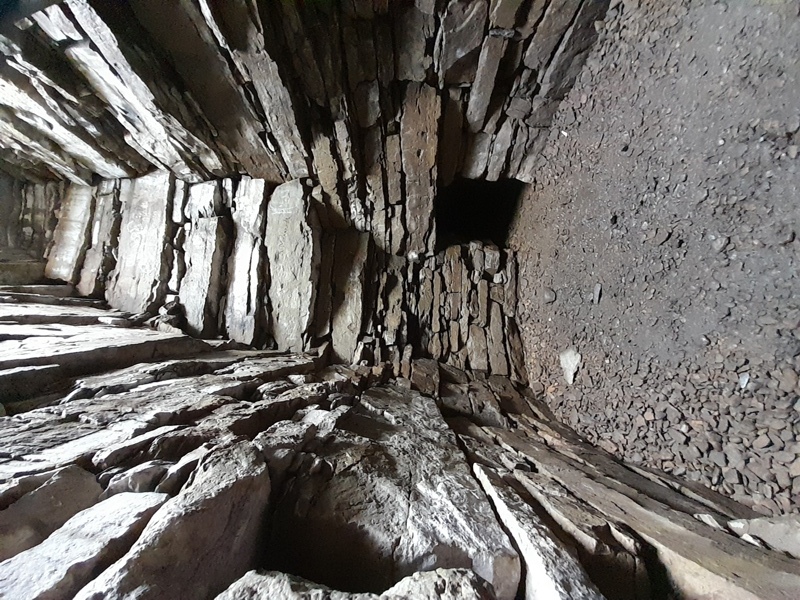
Fortunately, you no longer need to crawl into the burial chamber via the claustrophobic 5.3 metre long passageway. Access is via a sliding hatch in the roof which opens onto a ladder for climbing down into the dark bowels of this 5000-year-old chamber of the dead.
Junior seemed much less spooked by the morbid history of the place than I was. He gladly took a torch and squeezed his way into the smaller side chambers via “doorways” that were barely 50cm x 50cm. I wasn’t going to risk getting stuck in there.
It’s not the easiest cairn to get to as you have to hike across the hillside for 20 minutes from a very small car park, and the path isn’t clearly indicated. Our friends on Orkney all knew of the cairn, but none of them had visited. That gives you some idea of how out the way this place is, but we reckon it's worth seeking out.
Unstan Chambered Cairn
I’ve suggested Wideford Hill Cairn as an alternative place to visit if you can’t get tickets for Maeshowe. However, not everyone will be able to manage the hike to this relatively remote burial site. Fortunately, there’s a place very close to Maeshowe that is easy to access and it’s unlikely to be busy.
Unstan Chambered Cairn is located 2 miles west of Maeshowe which places it close to the other big archaeological attractions of the Ring of Brodgar and the Stones of Stenness. Despite its proximity to these crowd-pulling sites, Unstan receives relatively few visitors. This is something the neighbours will be relieved about as the cairn is quite literally at the bottom of someone’s garden and the car park/access road isn’t suitable for throngs of visitors.
Burial cairns on Orkney are usually designed with “stalls” divided by stone slabs (like Midhowe cairn on Rousay), or else they have one large central chamber with smaller side chambers, such as found at Wideford Cairn and Maeshowe. Unstan is unusual in that it combines both of these design elements, albeit on a much smaller scale than found at Maeshowe.
And like Maeshowe, Unstan has old graffiti carved on its stone walls. But the graffiti here has been left by some Victorian visitors from England and isn’t as interesting as the Viking Runes written on the walls of Maeshowe.
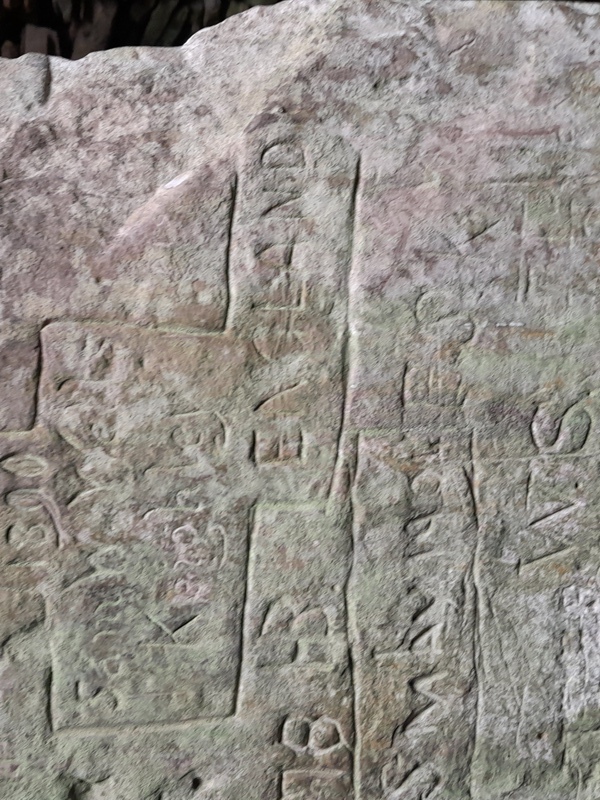
Archaeologists estimate that the cairn is 5000 years old which places it in the same period as Maeshowe and Skara Brae. When the site was excavated in the 1800’s it was found to contain several skeletons, flint tools, and pottery.
It’s one of the easier cairns to access, being just a short walk from the car park, and the entrance, whilst narrow, is not too low.
Hoxa Head Battery
Scapa Flow is a large natural harbour created by the Orkney Islands. Orkney also stands in a strategic position for guarding the northern seaways between Europe and the West. Consequently, it became the anchorage of the Royal Navy’s “Home Fleet” during WW1 and WW2.
Naturally, with so many warships gathered in one place, you don’t want to take any chances of a surprise attack, and the coastline around Scapa Flow is peppered with the remains of gun batteries, observation posts, command centres, and their associated infrastructure.
There are several sites where you can explore these, but we think the best one is at Hoxa Head, a few miles west of the pretty village of St Margaret’s Hope.
From St Margaret’s Hope, you simply follow the road signposted to Hoxa. This road takes you past a lovely beach at the Sands of Wright, and also goes past the Hoxa Tapestry Gallery, before arriving at a small car park (space for ~7 cars) which is almost at the road end. From the car park, you can then follow the farm track over the hill to arrive at the remains of a coastal defence installation that is a mix of WW1 and 2 structures.
Sadly, the buildings aren’t being preserved and their exposure to the elements has led to the collapse of some of the concrete structures. It’s only a matter of time until this important reminder of Orkney’s recent history is lost.
It’s a real shame that they haven’t been restored as a tourist attraction as it would be impressive to see one of the gun installations looking as it would have done during WW2.
The path then follows the clifftops on a circuit that you can easily walk in an hour, but we took a bit longer as we spent a good 20 minutes or more exploring the old bunkers and command posts. As you walk the cliffs, try to keep an eye on the waves below as it is not uncommon for whales to be seen swimming in this area.
Rennibister Earth House
Having discovered that Junior was a bit of a “tunnel rat”, we started to look for more archaeological sites where he could test his nerve crawling through dark narrow passageways that his Dad was too “feart” to enter. Rennibister Earth House ticked this box perfectly.
Rennibister is a farm located on the A965 about halfway between Kirkwall and Finstown. It isn’t signposted from the road, and the farmer probably doesn’t want too many visitors as you have to walk through his farmyard to get to the Earth House. which is accessed via a small hatch and a ladder.
The earth house was discovered by accident in 1926 when the roof of the underground structure partially collapsed under the weight of some farm machinery. When excavated, the bodies of 6 adults and 12 children were found. It would seem that they were placed here during the Iron Age as part of some burial ritual because their bones were arranged in unusual ways with some skulls balanced inverted on jaw bones.
None of these ghoulish events perturbed Junior who happily crawled along a 7 metre tunnel to explore the end of the earth house that would originally have been the entranceway.
Rennibister is the only earth house in Scotland in which human remains have been found, and the skeletons were placed here many centuries after the earth house was built. This all leaves the archaeologists puzzled about the purpose of these structures. It has been speculated that they might have been used a stores for food but they wouldn’t have been particularly dry. Some think they might have been emergency hiding places during times of attack, but they are very cramped and only have one way in / out, so this wouldn't be the wisest place to hide.
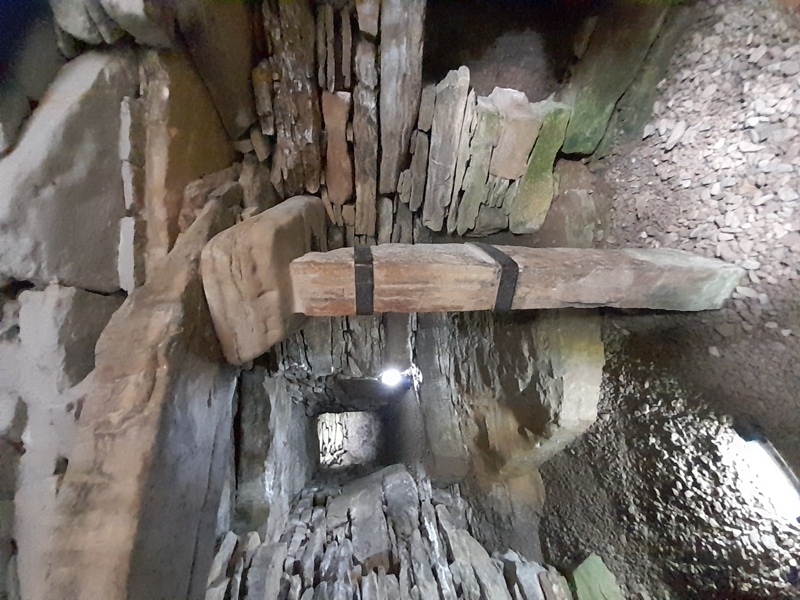
Personally, I think they might have been burial places used by lower ranks of society who didn’t merit burial in the grander tombs that can be found elsewhere on Orkney. It’s all a mystery.
Broch of Gurness
We wouldn’t count this as a secret place, but it is a good alternative if you find yourself unable to get tickets for a visit to Skara Brae. I would also recommend the Broch of Midhowe on Rousay as an even better alternative, but it's a bit harder to get to as that involves a ferry ride and a longer walk.
The Broch of Gurness, isn’t as old as Skara Brae, but we liken it to Skara Brae as it is an example of a cluster of dwellings where you can get some sense of the way our ancestors lived together as a community.
The focal point of this site is a large circular broch within which you can see partitioned rooms, a well, a hearth for a fire, “cupboards” made of stone, and stone steps leading to upper levels that have long since gone.
Gathered around the Broch, are the low-lying walls of several smaller dwellings within which you find objects that the historians have identified as storage cupboards, sinks or small reservoirs for fresh water, and “beds”.
It doesn’t convey such a complete picture as the more intact houses of Skara Brae, but you do get some appreciation of these ancient people’s desire to make their homes as comfortable as they could. There’s no evidence of Fred Flintstone-style cars, but these guys were living in a bit of style. There's even something that looks like a toilet complete with a stone toilet seat!
Sheila Fleet Shop & the Kirk Cafe
Something a bit different, but worth considering if you get a rainy day.
Sheila Fleet is an acclaimed jewelry designer who grew up on Orkney and has now established her own very successful brand. The jewelry is made on the island at Tankerness, which is a short drive southeast from Kirkwall.
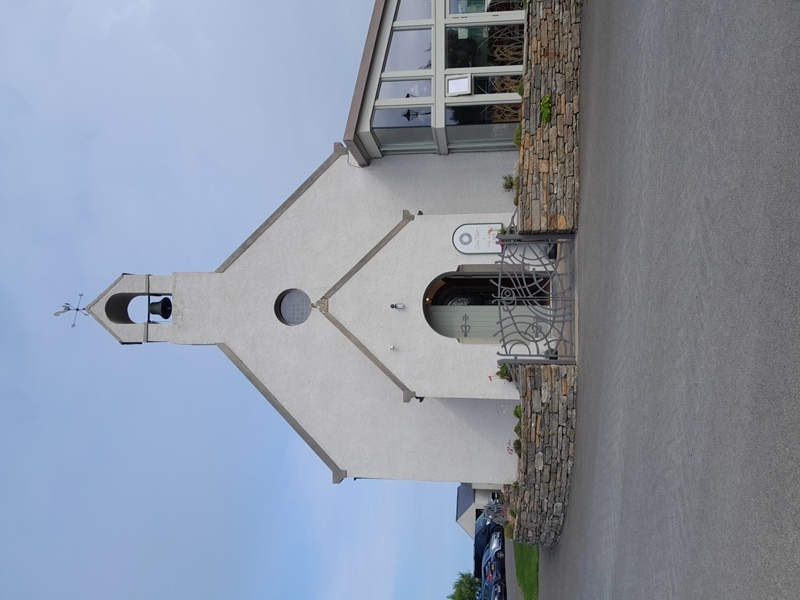
Junior and I weren’t in the market for any jewelry (Aury has already been treated to some Sheila Fleet gifts in the past), but we did want to visit her shop because it has a great cafe attached to it. And we needed cake!
The shop is located in an old Kirk and the layout of the shop takes full advantage of the building with rows of display cabinets laid out like church pews in an immaculately white chapel. It’s all quite heavenly… until you see the price tags!
The adjacent cafe continues the church theme with sturdy wooden chairs which have small stained glass windows inset to the seat backs. It’s very evident that a lot of thought and expense went into the design of the cafe and it’s well worth a visit. The strawberry tarts were also very good.
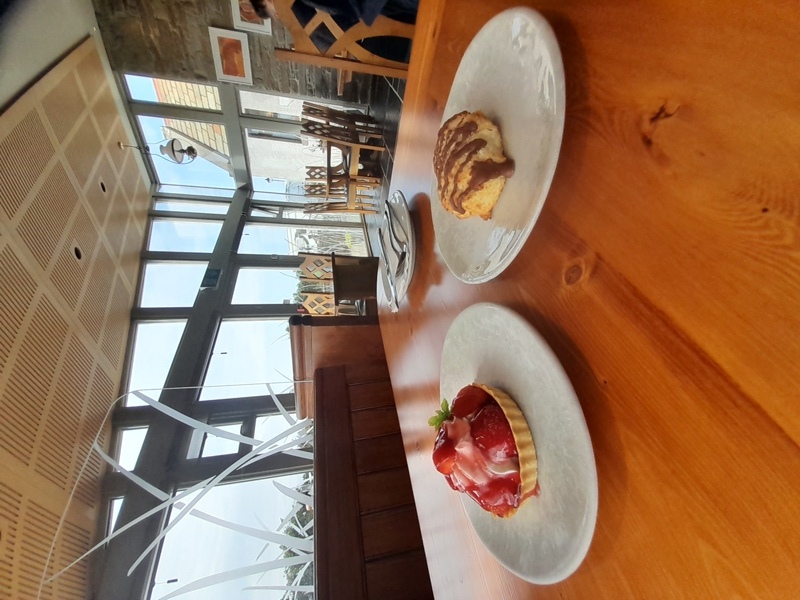
Dounby Click Mill
This isn’t a must-see, but it definitely falls into the category of being one of Orkney’s lesser-visited historical sites.
We had to use an Ordnance Survey map and a bit of common sense to get here. From the crossroads in Dounby village, travel west on the B9057 for a little over 2 miles and you will come to a section where the road widens and there is a farm track on your right. Park your car here (the road is wide so there’s space) and follow the farm track towards the ruins of a derelict farm building. As you near the farm, you’ll start to see the turf-covered roof of Dounby Click Mill over to your left.
”Click Mill” is the generic name given to this style of waterwheel which is of a design that was once found all over Scotland, but this is the only surviving example that we know of.
It’s an ingenious design that is able to use the flow of relatively small streams to power a millstone that would have ground oats and barley. Unlike a conventional waterwheel, the Click Mill’s had their wheels mounted on a horizontal plane so the axle of the waterwheel directly drove the mill wheel mounted above it.
The name “click mill” derives from the mechanism used to tip a measured amount of grain into the millstone. This mechanism consisted of a wooden knob mounted on the spinning mill stone which nudged a “Clapper” (an elongated wooden bowl suspended over the millstone) and this nudging action tipped out a measure of grain that was then crushed between the millstones. This nudging action made a clicking sound hence the name “Click Mill”.
It’s hard to explain, but it all makes sense when you see it for yourself.
And there’s more…
These are just a few of the places we visited on our trip to Orkney in July. None of them were overcrowded, and we had most of them to ourselves.
All of these places are located on the Orkney Mainland or islands that can be easily accessed via causeways. If we were to start listing sites on the other islands we’d never finish this Blog
In summary, the cruise ship crowds didn’t interfere with our sightseeing on Orkney. But we do recommend that you pre-book tickets if you want to visit Skara Brae or Maeshowe.
And if you can’t get tickets booked, we hope this Blog has given you some helpful ideas for alternative experiences that will show you the magic of Orkney.
If you are planning a trip to Orkney, you should consider the following Guides on our website:

